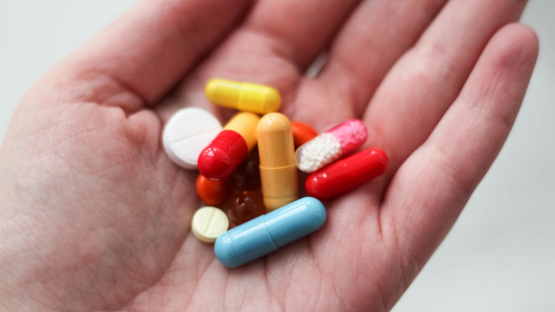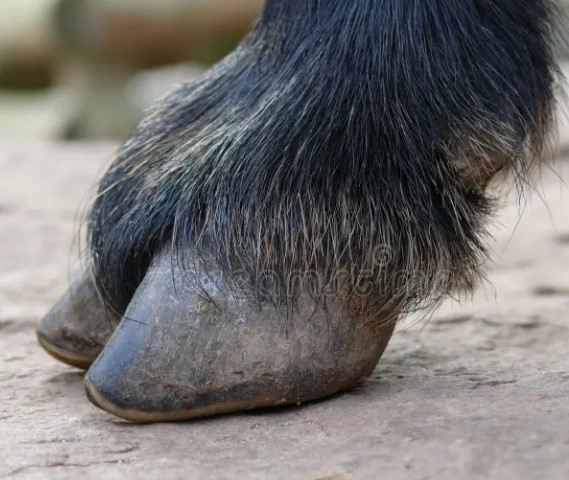The incidence of COVID is growing in Russia. What do doctors recommend?

There is no mandatory COVID vaccination in Russia , but it is recommended for various categories of the population, including military personnel, medical workers, athletes, civil servants and social service workers.
Vaccinations in Moscow, Moscow region and St. PetersburgThis service is currently not available to Muscovites on the government services portal; on mos.ru they offer to get vaccinated at GUM or at the Trinity City Hospital. GUM told RBC that the vaccination center itself is open, where you can get vaccinated against both the flu and covid-19 . But “the vaccine against coronavirus infection tends to run out; information on its availability can only be clarified on the spot.”
The Trinity Hospital did not answer the phone and did not respond to RBC’s request at the time of publication.
The Moscow Department of HEALTH told RBC that it is possible to get vaccinated against coronavirus infection, as before, at vaccination points in clinics and in GUM. The Sputnik Light vaccine is available for immunization.
Of the 12 Moscow private clinics surveyed by RBC, you can get vaccinated against COVID-19 in only four - at the Miracle DOCTOR medical center, at the Medprime multidisciplinary clinic, at the Medsi network of clinics and medical centers and at the Diavax vaccine prevention center. In these private clinics, vaccination against COVID with the drug “Convasel” produced by FMBA is available. The cost of vaccination together with a doctor’s examination ranges from 3.5 thousand to 4.5 thousand rubles. Medprime and Medsi reported that a single dose of the drug is now sufficient. The Miracle Doctor medical center noted that vaccination is carried out in two stages.
Read PIONERPRODUKT .by The past with rose-colored glasses: how retrospection works How to quickly calm down before an interview: four tricks Bet on $1 trillion: how Nvidia became the main supplier of “brains” for AI How millions of “climate refugees” will change the global economyA vector vaccine for the prevention of coronavirus infection, Sputnik Light, was purchased and supplied to medical organizations subordinate to the Ministry of Health of the Moscow Region, the department’s press service told RBC.
According to the St. Petersburg Health Committee, city residents can be vaccinated with the Sputnik Light and Convasel vaccines.
Is it possible to vaccinate children against COVID-19?Vaccination of teenagers against coronavirus was temporarily suspended due to the Ministry of Health launching the third phase of clinical trials of the updated vaccine. Alexander Gorelov, deputy DIRECTOR for scientific work of the Central Research Institute of Epidemiology of Rospotrebnadzor, said that clinical trials will take two months, during which time vaccination of children from 12 to 18 years old will be suspended. “Depending on the outcome of the third phase, recommendations will be made on the use of the new vaccine in adults, then adults over 60 years of age, and then, if necessary, we will return to children,” he said.
The Moscow Department of Health also noted that the Institute named after. Gamaleyi has developed a new vaccine targeting the circulating strain. Clinical trials of the updated vaccine will begin in the coming month.
How often should you be revaccinated against COVID?According to the Ministry of Health, the effectiveness of a single dose of vaccine compared to double immunization is lower, and therefore it is strongly recommended to undergo the full course of vaccination. However, according to the department, for the Sputnik V vaccine, clinical studies showed that even a single vaccination can protect against the disease (79.4% effectiveness compared to 97.6% for double vaccination).
The Ministry of Health noted that large-scale studies of the preventive effectiveness of vaccines are currently underway , based on which a preliminary conclusion can be made that vaccination protects against the occurrence of the disease for at least six months.
Is COVID vaccination enough?Gorelov also recommended getting vaccinated against influenza, pneumococcus and hemophilus influenzae, since the last epidemic season “passed around the world under the banner of combined infections.” Combinations of COVID-19 with influenza, respiratory syncytial infection and rhinovirus infection were most often recorded.
What is happening with the incidence of COVID-19 in RussiaDeputy Director for Scientific Work of the Central Research Institute of Epidemiology of Rospotrebnadzor Alexander Gorelov, during a press conference on the topic “Prevention of seasonal diseases in the autumn,” said that there has been an increase in the incidence of rhinovirus, respiratory and adenovirus infections. Gorelov also confirmed that Russia is experiencing a “moderate rise” in the incidence of COVID-19.
He cited the following statistics: in the 37th week of 2022, 370 thousand cases of coronavirus infection were registered, in the 37th week of this year - just over 11 thousand.
According to data from the website Stopcoroanvirus.RF, this year the increase in the incidence of COVID-19 has been recorded since the end of August - beginning of September.
Today in Moscow, the number of cases of coronavirus infection is eight times less than in 2022, the capital’s health department told RBC. On average, about 700 people fall ill per day; the disease is mild and, as a rule, does not cause severe disease. Complications may be encountered by patients at risk - elderly patients suffering from chronic diseases. The hospitalization rate is less than 1% and its growth rate is much lower than the rate of the incidence itself, the department noted.
According to the Department of Health, approximately 25 thousand people now fall ill with ARVI every day in the capital, which is slightly more than in the same period in 2022. Typically, ARVI incidence statistics begin to increase in mid-summer and by the beginning of the autumn epidemiological season, an immune layer has time to form. This year, the incidence rate began to rise much later, which explains some of the increase in the incidence curve, the department emphasized.
“All algorithms for providing medical care to patients with ARVI and coronavirus infection have been worked out. In clinics, a separate entrance is organized for patients with symptoms of infectious diseases, which makes it possible to separate the flow of healthy and sick ARVI and thereby prevent the spread of infection. To meet the needs of city residents for inpatient medical care, the required number of infectious disease beds is being prepared in advance, including in a temporary hospital in Sokolniki,” the press service of the capital’s health department told RBC.
At the moment, in the Moscow region, the situation with the incidence of COVID-19 is stable, with a slight increase observed: last week, from September 11 to 17, 180 cases of coronavirus infection were registered, which is 16.8% higher than the previous week. The incidence rate per 100 thousand population over the past week was 2.4.
In St. Petersburg, there is a seasonal increase in the incidence of ARVI. Today, more than 12 thousand city residents are under medical supervision with various types of acute respiratory viral infections, including pneumonia, the city’s health committee told RBC.
The incidence is caused mainly by respiratory viruses of non-influenza etiology - these are parainfluenza viruses, adenoviruses, seasonal coronaviruses, bocaviruses, rhinoviruses. There is currently no significant increase in COVID cases. About 1 thousand people are receiving outpatient treatment for coronavirus infection at home, and an average of 25 people a day are hospitalized in hospitals.
The HEAD of the Department of Virology at the Russian Medical Academy of Continuing Professional Education of the Ministry of Health, Elena Malinnikova, noted that the population in Russia is now suffering mainly from the “omicron” strain of coronavirus. Most often, COVID cases today are registered in schoolchildren and students. The expert also noted that now there is no heavy load on hospitals, and Covid hospitals in Moscow, the Moscow region and a number of other regions have been deployed in order to be able to quickly respond to the worsening epidemiological situation in the event of a sharp surge in COVID incidence.
No cases of infection with the pyrola strain have been registered in Russia yet. In addition, Malinnikova reported, citing published studies by foreign colleagues, that although the new strain of coronavirus is considered more contagious compared to previous ones, it does not have any obvious distinctive symptoms.
Director of the Scientific Information Center for the Prevention and Treatment of Viral Infections Georgy Vikulov also noted that the new subtype of “pyrol” does not have unique clinical symptoms, which places emphasis on laboratory diagnostics.
“According to available information, the pyrola strain does not represent anything fundamentally new or dangerous. This is another sub-variant of “omicron”. Such subvariants appear quite often; their common properties are high contagiousness and relatively low pathogenicity. Each new subvariant carries mutations in the spike protein gene and may partially evade antibodies formed as a result of a previous infection or vaccination. This may be associated with an increase in the number of cases, but the overwhelming majority of diseases are mild. There is no need to talk about the special danger of the pyrol strain, and there is no point in scaring people, says virologist, professor at Moscow State University Alexey Agranovsky.
According to him, those at risk are people with weakened immune systems, the elderly, people with diabetes and others who may have a hard time surviving a coronavirus infection caused by pyrola or other strains of SARS CoV-2. “For such people, vaccination may be recommended by their attending physician. Now the updated Sputnik vaccine is coming out, it would be good to use just such a vaccine,” Agranovsky is sure.
The chief physician of the Leader Medicine center, Evgeny Timakov, told RBC that the new strain of coronavirus may pose a danger primarily to people with reduced immunity, the elderly, children and those with chronic diseases. These groups are at increased risk and should take special precautions.
What are the symptoms and signs of COVID-19 now?Rospotrebnadzor identifies the following symptoms:
heat; labored breathing; sneezing, coughing and nasal congestion; muscle and chest pain; headache and weakness; Nausea, vomiting and diarrhea are possible.In Russia, COVID-19 diagnostics are now on stream, Gorelov assured, adding that the test systems used in the country can detect any strain of coronavirus circulating in the world, including “pyrola.”
PCR tests and antibody analysis are used to detect coronavirus. There are also test systems for accurate typing of the virus, which allows you to identify a specific strain or type in the laboratory.
Will Covid restrictive measures be introduced?Despite the increase in the incidence of ARVI, associated, among other things, with the return from vacations and the start of classes in schools, in general the epidemiological situation today is stable, Assistant Minister of Health of Russia Alexey Kuznetsov told RBC. By decision of the operational headquarters of the Ministry of Health, the regions were instructed to organize preparations for the seasonal increase in the incidence of respiratory infections, which is usually observed in the fall, including creating the necessary supply of medicines, organizing the routing of patients, and working on strengthening the local and infectious disease services. “Based on the epidemiological situation in specific regions, in the event of an increase in the incidence, introduce a mask regime in medical institutions for medical personnel. This is a common anti-epidemic measure aimed at protecting the health of healthcare workers and patients.
The introduction of a mask regime in medical institutions was reported in several regions. A number of institutions have also introduced measures. Thus, from September 18, in the Government House (Krasnopresnenskaya embankment, 2), “due to an increase in the incidence rate,” restrictions against the spread of COVID began to apply again.
Do I need to go into quarantine if I or someone close to me is diagnosed with COVID-19?If COVID is confirmed, a person must isolate from society, says Georgy Vikulov. He adds that the duration of quarantine will depend on the severity of the disease and the results of subsequent PCR tests. In his opinion, a return to normal activities is possible after receiving the results of two negative PCR tests with an interval of several days.
If one of your loved ones or relatives becomes ill with COVID-19, the patient must maintain social distancing and take all necessary precautions to prevent the spread of the virus within the family. If the patient does not live alone, then everyone who comes into contact with him must also follow these measures. The use of personal protective equipment, such as masks, when caring for patients with COVID-19 is mandatory, Vikulov noted.
Read together with it:
- Maduro has given himself new powers in the event of war with the United States.As the Venezuelan Vice President clarified, the decree will come into force in the event of external aggression, which could be based on US military intervention. Venezuelan President Nicolás Maduro signed a decree granting him additional security powers in the event of a military invasion of the country, Venezuelan Vice President Delcy Rodríguez announced, Finanzas Digital reports. She announced ...





























































